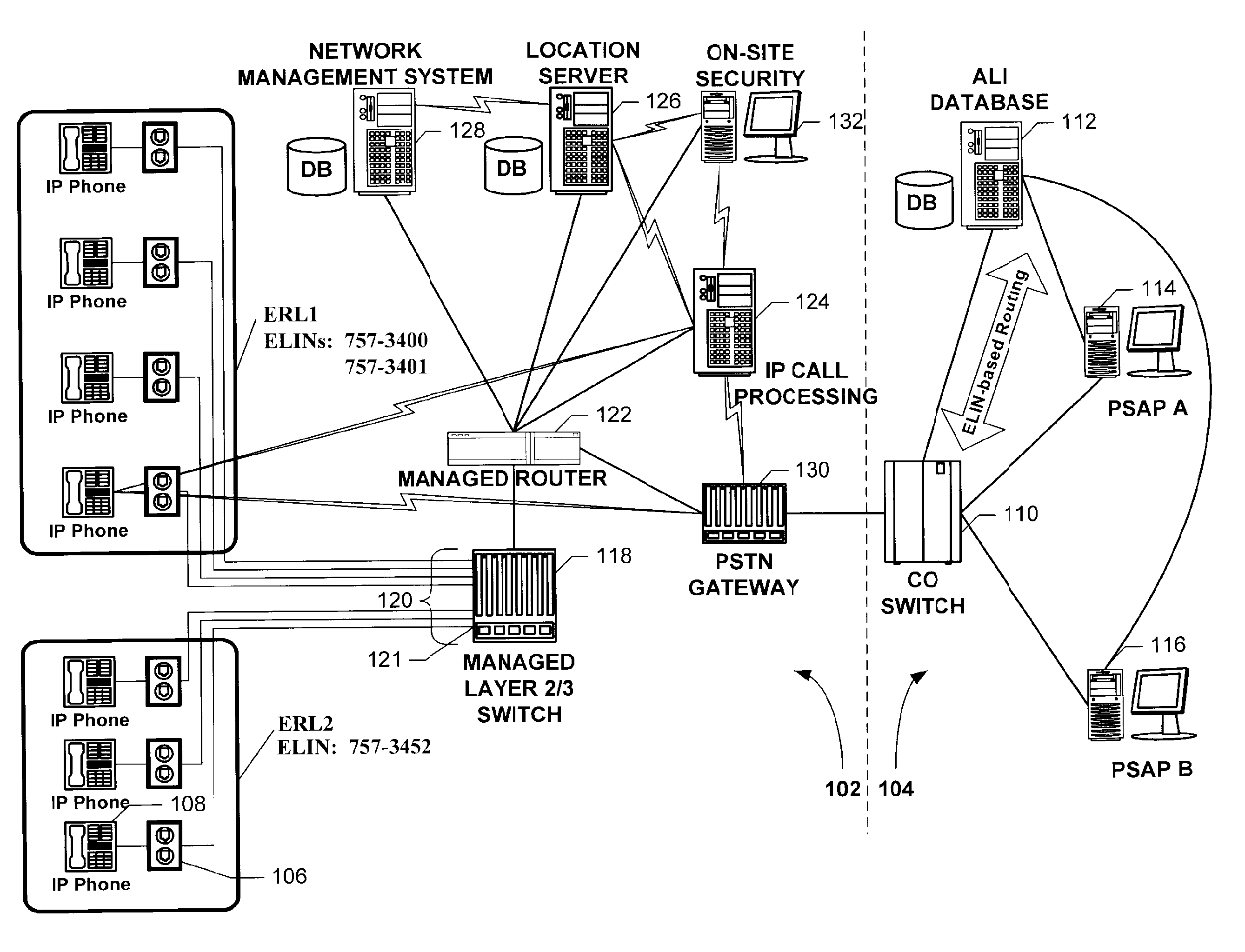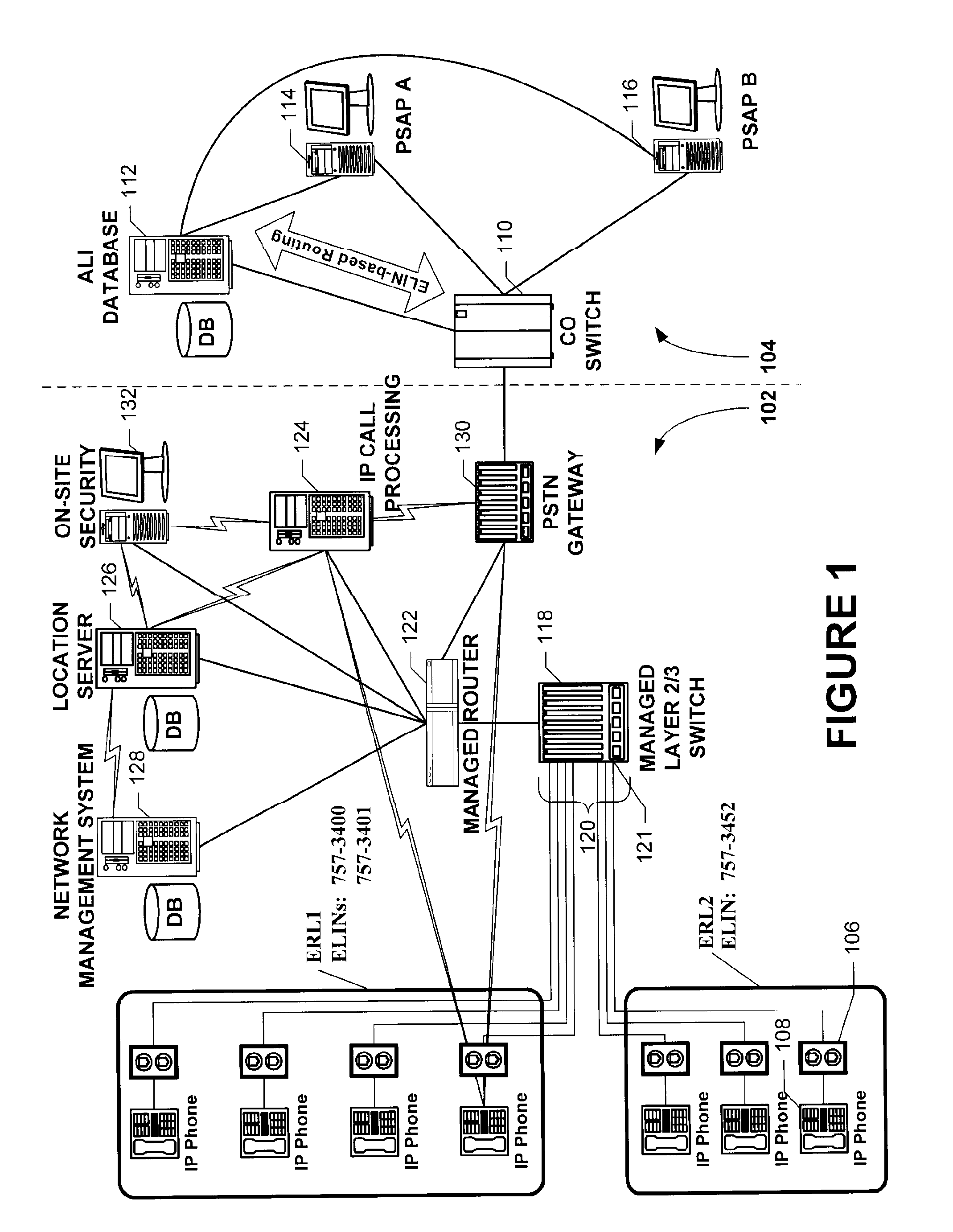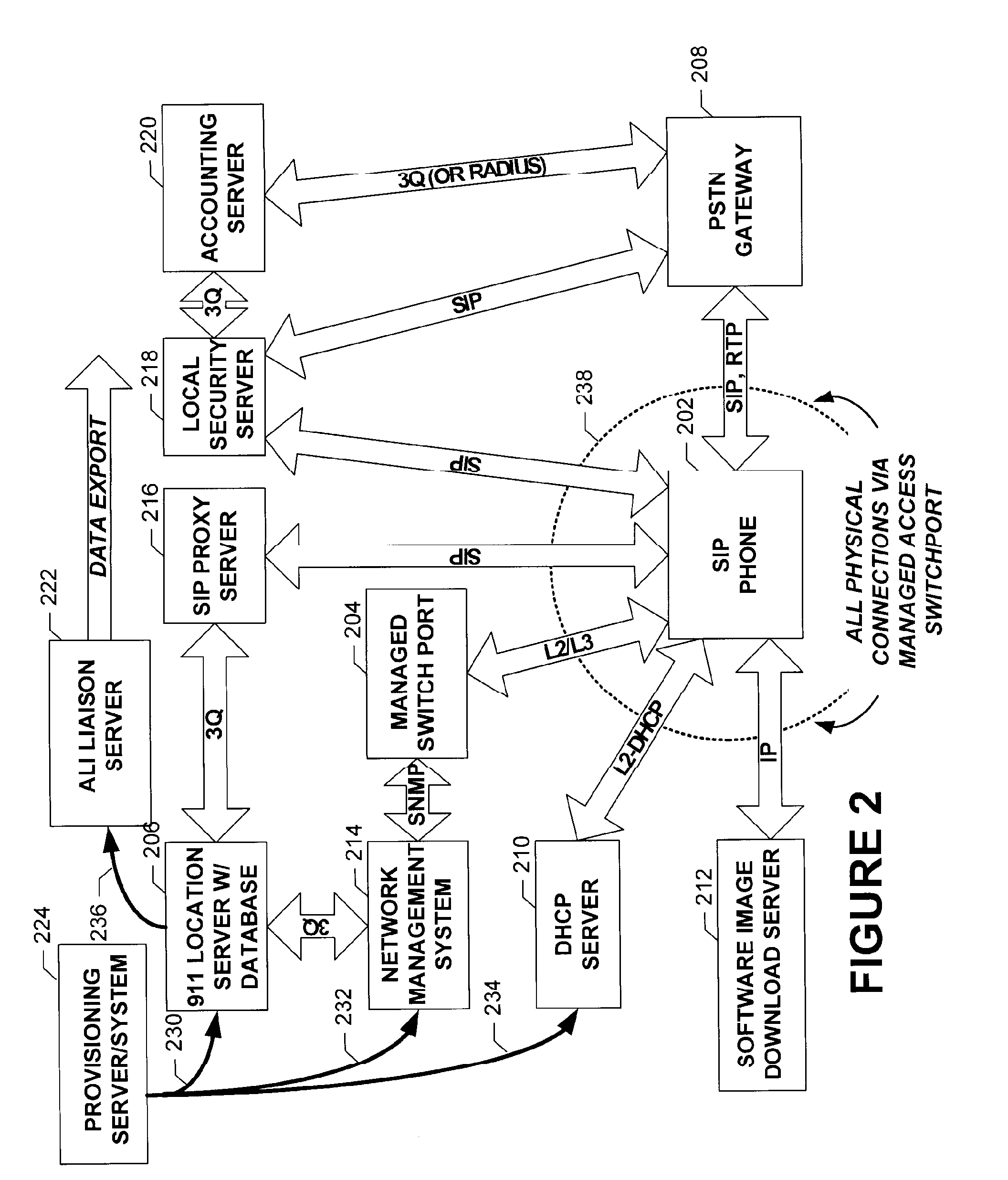IP-Based Enhanced Emergency Services Using Intelligent Client Devices
a client device and enhanced technology, applied in the field of voice over ip communication systems, can solve the problems of not meeting the requirements of the requirements, many aspects of the practical implementation have not yet achieved standardization, and pbx would not be able to de-multiplex a callback from the psap
- Summary
- Abstract
- Description
- Claims
- Application Information
AI Technical Summary
Benefits of technology
Problems solved by technology
Method used
Image
Examples
Embodiment Construction
[0050]The basic components of IP-based E-911 service are illustrated in FIG. 1, which depicts a high-level reference architecture of a preferred embodiment. The elements are shown to reside either behind the IP PBX (Enterprise Premise area 102) or in the PSTN space (Service Provider & PSAPs area 104). Multi-station emergency response locations ERL1 and ERL2 reside in the enterprise area 102. ERL1 may be associated with a description of the Emergency Response Location, for example, of 3200 Main Street, 3rd floor, and ERL2 may be associated with a description of 3200 Main Street, 2nd floor, cubes 5 through 7. Note that ERL1 has two ELINs, while ERL2 has just one.
[0051]The physical connection points to the network are preferably provided by some form of jack (e.g., an RJ45) which are identified with physical locations. An example physical location is jack 106, indicated for the bottom-most connection point in FIG. 1, which might be an RJ-45 jack located on the ...
PUM
 Login to View More
Login to View More Abstract
Description
Claims
Application Information
 Login to View More
Login to View More - R&D
- Intellectual Property
- Life Sciences
- Materials
- Tech Scout
- Unparalleled Data Quality
- Higher Quality Content
- 60% Fewer Hallucinations
Browse by: Latest US Patents, China's latest patents, Technical Efficacy Thesaurus, Application Domain, Technology Topic, Popular Technical Reports.
© 2025 PatSnap. All rights reserved.Legal|Privacy policy|Modern Slavery Act Transparency Statement|Sitemap|About US| Contact US: help@patsnap.com



